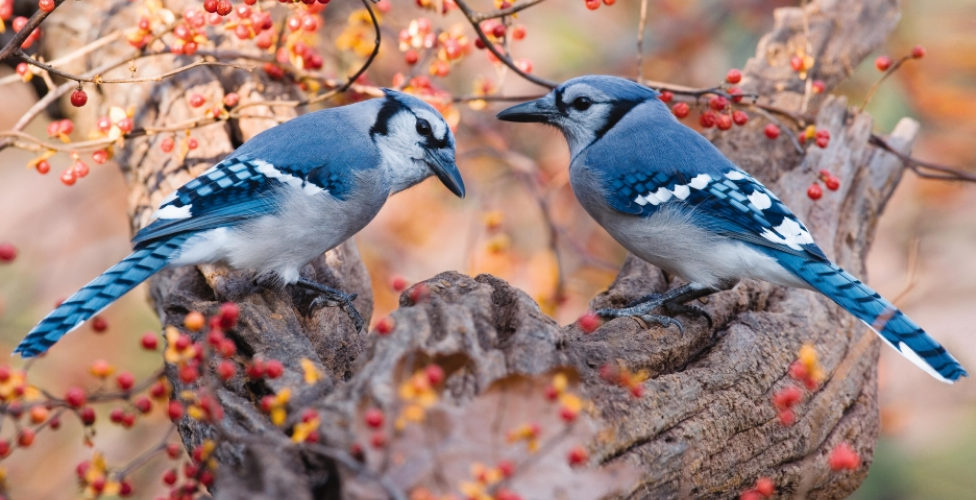The blue jay is a passerine bird in the family Corvidae, native to eastern North America. It lives in most of the eastern and central United States; some eastern populations may be migratory. Resident populations are also in Newfoundland, Canada; breeding populations are found across southern Canada.
Though picking out a blue jay amongst other birds may be simple, differentiating between a male and female blue jay is a different task entirely. Male and female blue jays are not sexually dimorphic, meaning there are no differences in their plumage. Males tend to be larger than females, but the difference is minuscule. Let us talk about the more about the two.

Male and Female Blue Jays
Male and female Blue Jays are generally similar in size. Male Blue Jays have brighter and more vibrant blue feathers compared to females. Their plumage appears richer in shades of blue with white and black markings. Females, on the other hand, tend to have slightly duller and more muted blue feathers.
Both male and female have a crest on their heads, which can be raised or lowered depending on their mood or to communicate with other birds.
Blue Jays produce loud and varied calls, which they use for communication. Both males and females produce similar vocalizations, it is only the timing and context of their calls that may differ. During the breeding season, males might be more vocal as they establish territories and attract mates.
These bluebirds are monogamous birds and both sexes are usually active in building nests and raising their young. Females are responsible for incubating the eggs, but males may assist by bringing food to the female during this period.
During the breeding season, male Blue Jays can show more aggressive and territorial behavior as they defend their nesting territory. They may engage in confrontations with other males and display dominance through posturing and vocalizations.
These birds are omnivorous birds and are known to cache food for future consumption. Both males and females engage in foraging activities, which include collecting and hiding seeds, insects, and other food items.
Male vs Female Blue Jays: Key Differences
| Characteristic | Male Blue Jays | Female Blue Jays |
|---|---|---|
| Plumage Color | Bright cobalt blue with white markings | Slightly duller blue with less white |
| Size | Slightly larger in size | Slightly smaller in size |
| Bill Size | Slightly longer and thicker bill | Slightly shorter and thinner bill |
| Crest Size | Typically have larger crests | Smaller crests |
| Facial Markings | Black necklace-like band across the throat | Often lacks the black band |
| Eye Color | Darker, often deep blackish-brown | Slightly lighter, brownish eyes |
| Behavior | May be more aggressive and vocal | Often less aggressive and vocal |
| Courtship Displays | Engages in elaborate courtship rituals | May be more passive during courtship |
| Nest Building | May help gather materials for the nest | Often responsible for nest building |
| Incubation Duties | Generally not involved in incubation | Primarily responsible for incubation |
| Feeding Young | May assist in feeding the young | Also involved in feeding, but roles may vary |
| Territorial Behavior | May exhibit more territorial behavior | Generally less territorial behavior |
| Vocalizations | May have a slightly different call | Calls are generally similar |